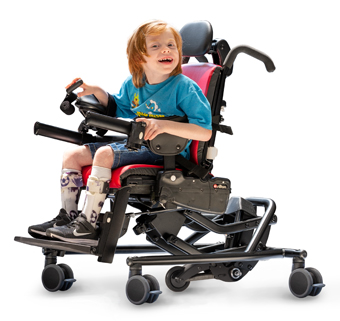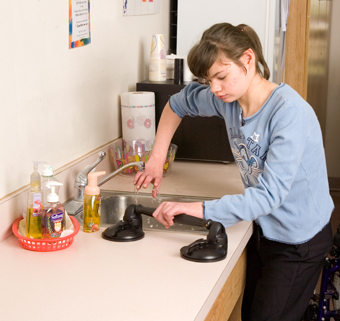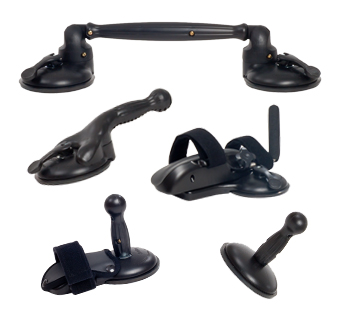Teaching Active Sitting Skills
Using the Rifton Activity Chair with Forearm Prompts
| January 2015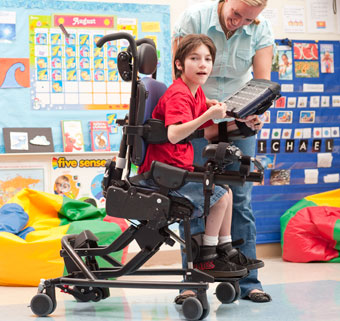 As therapists we generally like to distinguish between active and passive sitting. Active sitting refers to dynamic positioning of the trunk and extremities over a stabilized pelvis for the purpose of completing a task. Active sitting is the posture we use for eating, learning and participation because it is a posture of alertness and purpose, relying heavily on the strength and sustained functioning of the musculoskeletal system. With active sitting, our feet are flat on the floor and our pelvis is tilted anteriorly guiding the trunk and head into a forward-leaning position. This activates the muscles of the trunk and neck to resist the force of gravity on the body and frees the upper extremities for activities like reaching, writing, or raising the hand. It also encourages head control for improved communication.
As therapists we generally like to distinguish between active and passive sitting. Active sitting refers to dynamic positioning of the trunk and extremities over a stabilized pelvis for the purpose of completing a task. Active sitting is the posture we use for eating, learning and participation because it is a posture of alertness and purpose, relying heavily on the strength and sustained functioning of the musculoskeletal system. With active sitting, our feet are flat on the floor and our pelvis is tilted anteriorly guiding the trunk and head into a forward-leaning position. This activates the muscles of the trunk and neck to resist the force of gravity on the body and frees the upper extremities for activities like reaching, writing, or raising the hand. It also encourages head control for improved communication.
In healthy people, active sitting is habitual. But for those with disabilities of the musculoskeletal system it is a skill that needs to be learned and practiced, sometimes with reliance on positioning chairs and equipment. MOVE (Mobility Opportunities Via Education), a research-based curriculum that teaches life-skills to people with disabilities, developed a system for teaching functional sitting using an activity chair with forearm prompts.
The MOVE Program teaches active sitting from the top of the body down. First head control, then trunk control and finally, the hips and legs. Simultaneously limiting the movements of the rest of the body and providing supports where necessary while working top down improves the focus and outcome of the practice sessions. As strength and control improves and skills are mastered, supports are removed for progress towards regular classroom seating.
The Rifton Activity Chair has been designed to support these MOVE concepts. The preferred initial configuration of the Activity Chair for teaching functional sitting is as follows:
- Hi/lo base: for positioning feet flat on floor for balance, stability and proprioceptive feedback
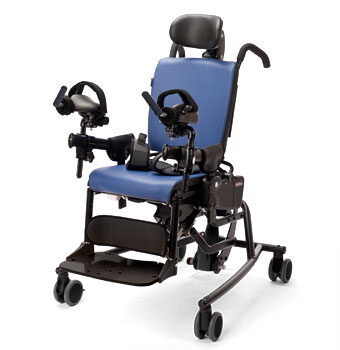
- Adjustable seat and back
- Tilt-in-space: adjust anteriorly for guiding anterior pelvic tilt and trunk placement
- Forearm prompts
- Contoured or flat headrest
- Pelvic harness
- Abductor
- Leg prompts
- Footboard
- Sandals and wedges
What truly sets the Activity Chair apart are the forearm prompts. Unlike armrests, the forearm prompts position the upper extremities in front of the body. This guides the pelvis into anterior tilt and brings the trunk forward into the functional sitting posture. For those working on head control, stabilizing the upper extremities in this manner helps to strengthen the muscles of the upper back and neck.
But even a great chair doesn’t replace practice. People with disabilities learn skills through hours of practice (just like the rest of us). But as therapists, we make this practice worth much more if we provide great positioning tools. And that’s an important part of what we do.
